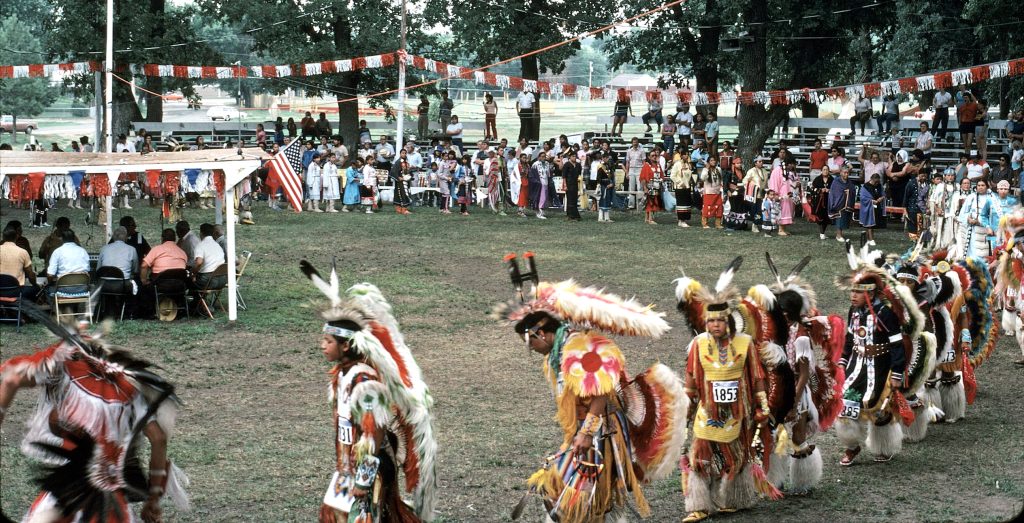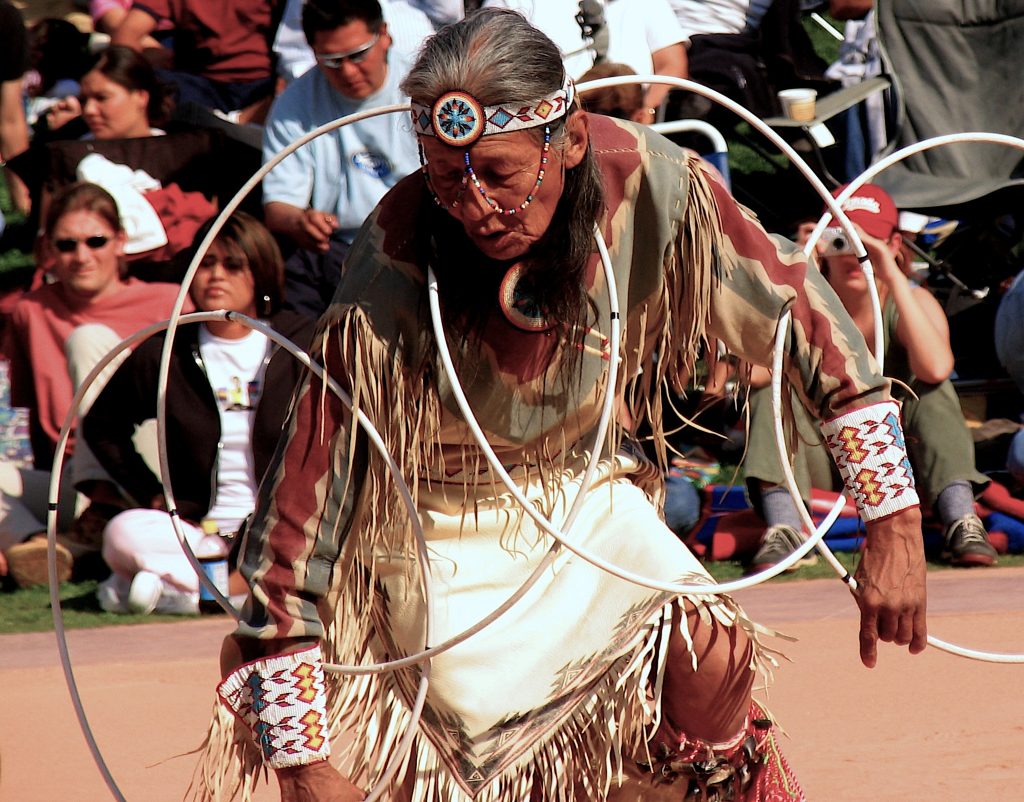Dance is one of the primary ways in which Native Americans have expressed themselves throughout the generations. Despite two centuries of politicization of Native dance in North America, from legal restrictions to cultural appropriation by non-Indians, dance continues to be a source of Native identity.

“In many communities, powwows are the central vehicle by which Indian people negotiate a shared identity and a common cultural fabric,” wrote Clyde Ellis, who teaches at Elon University and is a leading scholar of Native dance and powwow culture. Though ceremonial dance is not the only source of these connections, “dance is widely perceived as particularly potent and emotionally satisfying for those who embrace it.”
The powwow is “one of the most rapidly growing expressions of ethnic awareness and identity to be found in the world today,” wrote folklorist Barre Toelken. “Dance embodies cultural attitudes which cannot readily be articulated today in other ways.” Throughout Oklahoma and to some extent in Kansas, Missouri, Arkansas, and Nebraska, large powwows welcome Natives and non-Natives alike.
While traditional or “in house” powwows are often intended exclusively for a single tribe or community, the larger intertribal powwows are well-attended competitions with cash prizes. (See powwows.com.) But while ceremonial dances and ritual have often been topics for research, powwows have not been taken as seriously—even though these events have become essential for maintaining both tribal and “intertribal” ties.
“I have always considered dance to be among the most profound cultural expressions, for me personally, of what it is to be Cheyenne,” the Southern Cheyenne dancer W. Richard West Jr. told Clyde. Powwows are not the only place that Native dance takes place, but they are currently the most visible place in which it can be observed. Still, the very topic of “observation” is complicated. Not all of these events exist to be watched: Many are primarily for the Native participants who, if they are not dancing, are at least tribally tied to the dances.
Many large powwows remain intertribal events (“Pan-Indian” was an earlier term) but during the last half-century dancers have made attempts to delineate more sharply the aspects that make each tribe unique.

“The participants in pow-wows, particularly in Oklahoma, have realized that the symbols and signs through which they had identified themselves are now ambiguous,” wrote historian Thomas W. Kavanagh. As a response, some dancers wear distinguishing elements, such as the pins worn by the Comanche Little Ponies during gourd dances.
The federal government severely restricted Native dancing through much of the 19th century, but by the 1890s certain staged events such as Buffalo Bill’s Wild West provided a place at which some form of Native dance could be presented to paying audiences—“in theatrical structures that officials saw as exciting, but safe,” Jacqueline Shea Murphy wrote. These shows often presented showy versions of Native dances, complete with extravagant regalia. Some elements of the Fancy Dance, as articulated in the 1920s by the Ponca dancer Gus McDonald (and featuring spins, athleticism, and lightning-fast footwork) may have had their origins here.
Other important styles include the Gourd Dance, which originated with the Kiowa and is often accompanied by a large drum, gourds, or metal rattles. The Grass Dance of the northern plains is warrior dance featuring brightly colored fringes that sway like grass—devoted to preparing a space for ceremonies or encampments. In the Hoop Dance, participants create patterns with anywhere from four to 28 hoops—the hoop being a symbol of the eternal circle of life.

The Black Leggings Society is an elite Kiowa warrior group whose dances sometimes honor American veterans. The Stomp Dance (Cherokee, Chickasaw, Creek, Seminole, among others) is performed to call-and-response singing and features men moving counterclockwise in a circle and women joining them wearing ankle rattles that help establish the rhythm.
In the 1930s, many federal restrictions on Native religious practices were lifted; the Native Arts and Crafts Act of 1935 also helped the community to take ownership of its own art, including dances that were once forbidden. These dances began to draw the attention of pioneers of “European” contemporary dance such as Ted Shawn, Lester Horton, and Martha Graham—who traveled to observe Native dance and, appropriately or not, sometimes attempted to capture the spirit of these dances in their choreography. In general they did not attempt to replicate the dances onstage but instead used them “as a kind of catalyst for artistic inspiration,” Shawn said.
In the second half of the 20th century, Native-led dance companies began to reclaim Native stories. A new sort of dance hybrid developed in such companies such as Louis Mofsie’s Thunderbird American Indian Dancers, Rosalie Jones’ Contemporary Dance-Drama of Indian America, and Hanay Geiogamah’s American Indian Dance Theatre. By the late-20th century, dozens of small Native-led dance collectives had sprung up throughout North America.
The question remains open as to whether it is acceptable to present these dances outside of Indian settings; this question must be answered by Native Americans. Many believe they have been given these dances for a reason. “God gave us lots of ways to express ourselves,” the Kiowa dancer Harry Topfi Sr. told Clyde. “One of them is these dances. When I go to them—Gourd Dance, Black Leggings, whatever—I’m right where those old people were. Singing those songs, dancing where they were danced. My children and grandchildren, they’ve learned these ways, too, because it’s good—it’s powerful.”
—By Paul Horsley